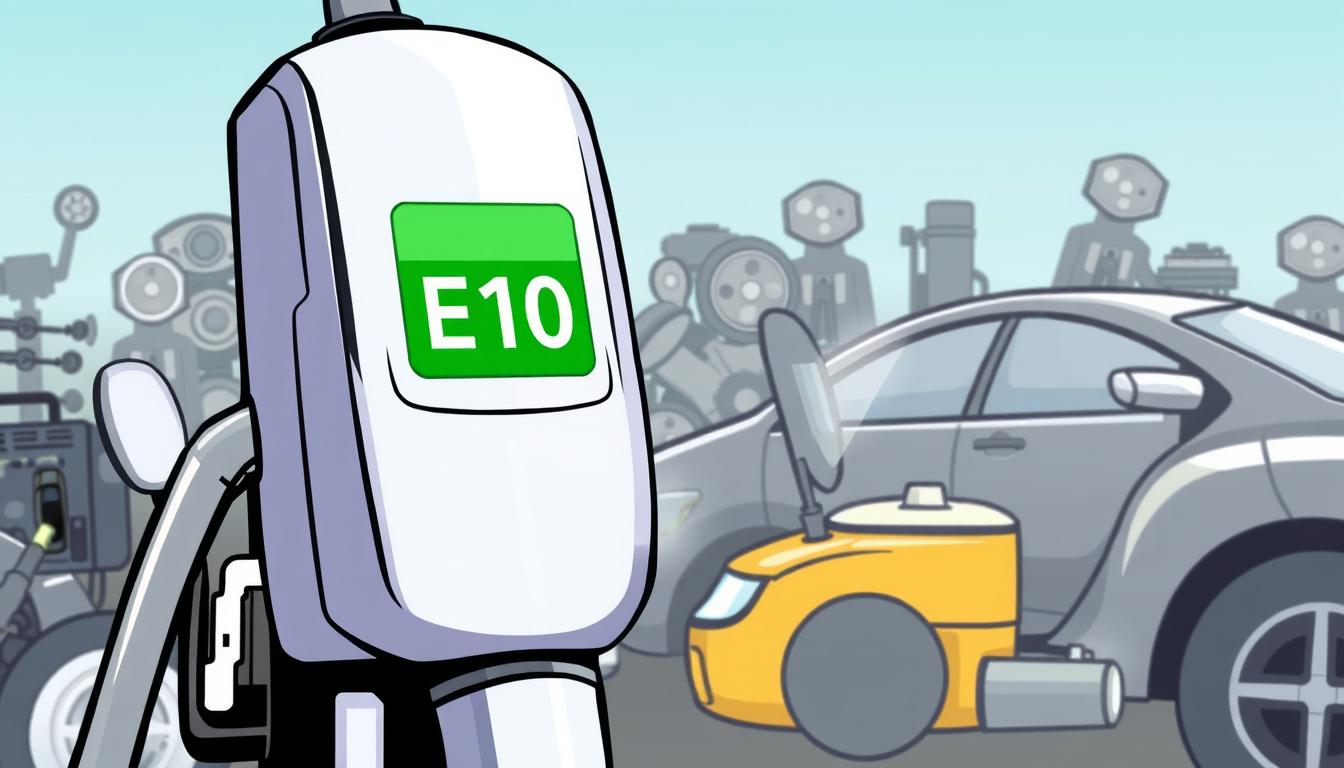The debate over ethanol-blended gasoline has been ongoing since its widespread introduction in the United States. As drivers become increasingly conscious about fuel choices and their impact on vehicle performance,
understanding the effects of 10% ethanol fuel (E10) on your car is crucial. Let’s dive into the facts and separate myths from reality.
Quick Answer:
E10 fuel (10% ethanol) is safe for use in most modern vehicles manufactured after 2001. While ethanol has slightly lower energy content than pure gasoline, the 10% blend has minimal impact on performance and fuel economy.However, owners of classic cars, boats, or small engines should check their manufacturer specifications, as these may require pure gasoline.
Contents
Understanding E10 Fuel: The Basics
E10 gasoline, containing 10% ethanol and 90% conventional gasoline, has become the standard fuel option at most American pumps.
According to the U.S. Energy Information Administration, ethanol-blended fuel accounts for more than 98% of gasoline sales in the United States. But what exactly does this mean for your vehicle?
Benefits of E10 Fuel
- Environmental Impact: Ethanol reduces greenhouse gas emissions by up to 50% compared to pure gasoline
- Cost-Effective: Generally cheaper than pure gasoline due to federal subsidies
- Energy Independence: Reduces reliance on foreign oil imports
- Higher Octane Rating: Helps prevent engine knocking
Potential Concerns and Myths
Fuel Economy
While ethanol contains approximately 30% less energy than pure gasoline, the 10% blend only results in a 2-3% reduction in fuel economy for most vehicles. This minimal difference is often offset by the lower cost of E10 fuel.
Engine Performance
Modern vehicles are designed to run efficiently on E10 fuel. The EIA reports that over 95% of cars on U.S. roads today are fully compatible with E10 gasoline, with no adverse effects on:
- Engine performance
- Long-term durability
- Starting ability
- Drivability
Material Compatibility
Most post-2001 vehicles use materials specifically designed to handle ethanol blends. However, some concerns exist for:
- Classic cars (pre-2001)
- Marine engines
- Small equipment (lawnmowers, chainsaws)
- Motorcycles (check manufacturer specifications)
Impact on Different Vehicle Components
Fuel System
Modern fuel systems feature ethanol-resistant components, including:
- Fuel lines
- Gaskets
- Seals
- Fuel injectors
Engine Performance
Studies show that E10 fuel:
- Maintains proper engine operation
- Provides adequate lubrication
- Doesn’t cause significant wear when used as recommended
Best Practices for E10 Usage
- Regular Maintenance
- Follow manufacturer-recommended service intervals
- Replace fuel filters as scheduled
- Keep fuel system clean
- Storage Considerations
- Use fuel within 30 days for best results
- Add fuel stabilizer if storing vehicle long-term
- Keep fuel tank at least half full to minimize condensation
Vehicle-Specific Recommendations
Modern Vehicles (2001 and newer)
- Safe for regular use
- No special maintenance required
- Compatible with all systems
Classic Cars (pre-2001)
- Check owner’s manual
- Consider fuel system upgrades
- Monitor for signs of degradation
Small Engines and Equipment
- Verify manufacturer specifications
- Use fuel stabilizers when recommended
- Consider non-ethanol fuel for optimal performance
Ethanol Blends: E10, E15, and E85
Drivers have more than just E10 fuel to choose from. E15 blends 15% ethanol with 85% gasoline and is okay for most cars and trucks. E85, on the other hand, has up to 85% ethanol and is for flex-fuel vehicles.
Vehicle Compatibility with Different Blends
Most cars can run on E10, the common fuel type at U.S. gas stations. But, higher ethanol levels need careful consideration. Cars made after 2001 can use E15, while flex-fuel vehicles can go up to E85. Always check your car’s manual to see what fuel it can handle.
Choosing the right ethanol blend affects fuel economy. E15 uses about 5% less energy than gasoline, and E10 uses 3% less. Yet, ethanol’s higher octane might help your car use less fuel. Think about your car’s needs and your driving habits when picking a fuel type.
Conclusion
The consensus among automotive experts and regulatory bodies is that E10 fuel is safe and suitable for most modern vehicles. While some specific applications may require pure gasoline, the average driver can confidently use E10 without concern for vehicle damage or significant performance loss.
Remember to:
- Check your owner’s manual for specific fuel requirements
- Follow regular maintenance schedules
- Monitor vehicle performance
- Address any fuel-related issues promptly

Hi, I’m Sufiyan, the developer behind this platform. I created FuelConsumptionCalculator.com to simplify fuel tracking for everyone — because understanding your vehicle shouldn’t require a degree in mechanics. I’m always working on adding more tools and content to make this site even more useful

